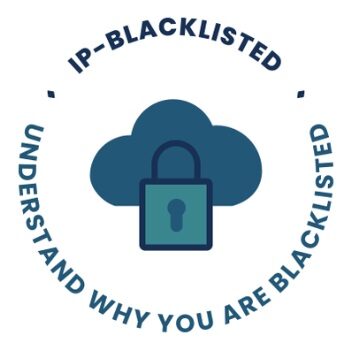Blacklisting is a measure taken by cybersecurity companies, mail service providers, and ISPs to protect users from malware and spam. An IP address is blacklisted when it is identified as a source of malicious or unwanted activity, such as spamming. This can have significant consequences for individuals, organizations, and businesses. Here are some of the potential consequences of being blacklisted:
- Reduced website traffic: If a website is blacklisted, it may be blocked by search engines, which can significantly reduce the traffic to that site. This can be detrimental to businesses that rely on online traffic to generate revenue.
- Blocked email communication: If an IP address is blacklisted, emails sent from that address may be blocked or marked as spam by email providers, which can prevent important messages from being delivered.
- Reputational damage: Being blacklisted can damage an organization’s reputation, as it may be seen as a source of spam or other unwanted activity.
- Difficulty accessing certain websites: If an IP address is blacklisted, it may be blocked from accessing certain websites or services, which can be frustrating and limit online activity.
- Increased costs: If an IP address is blacklisted, the organization may need to spend money on services to remove it from the blacklist or to mitigate the damage caused by being blacklisted.
To avoid being blacklisted, it is important to follow best practices for email marketing and website management. This includes using proper authentication records, maintaining a clean email list, practicing good email hygiene, and monitoring proactively for complaints, spam trap hits, and bounce rates. If an IP address is blacklisted, the organization can take steps to request removal from the blacklist. This may involve taking measures to prove that the organization is not a spammer or attacker, such as implementing stronger spam filters, removing infected PCs from the network, or addressing issues with server configurations.
In the case of spamming, it is important to ensure that the organization is in compliance with the CAN-SPAM Act and other relevant regulations. This includes providing clear and accurate information in the email, including a physical address and an opt-out mechanism. It is also important to avoid sending unsolicited emails or using misleading subject lines. By following these best practices, organizations can reduce the risk of being blacklisted and maintain a positive online reputation.
In summary, being blacklisted can have significant consequences for individuals, organizations, and businesses. To avoid being blacklisted, it is important to follow best practices for email marketing and website management, and to take steps to address any issues that may have led to being blacklisted. By maintaining a clean email list, practicing good email hygiene, and complying with relevant regulations, organizations can reduce the risk of being blacklisted and maintain a positive online reputation.
Citations:
[1] https://www.linkedin.com/pulse/impact-ip-blacklisting-real-life-consequences-costs-shahidul-islam
[2] https://unspam.email/articles/check-ip-blacklist/
[3] https://www.warmy.io/blog/surbl-blacklist-how-to-remove-your-ip-from-blacklist/
[4] https://folderly.com/blog/barracuda-blacklist
[5] https://www.mailmonitor.com/how-to-avoid-the-spamhaus-zen-list-2-0/
